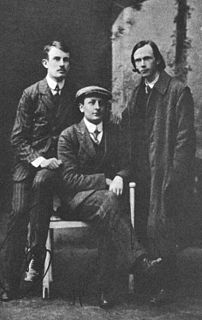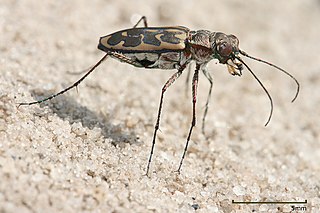
The Wiesner building houses the MIT Media Lab and the List Visual Arts Center and is named in honor of former MIT president Jerome Wiesner and his wife Laya. The building is very box-like, a motif that is consistently repeated in both the interior and exterior design evoking a sense of boxes packed within each other.

Jerome Bert Wiesner was a professor of electrical engineering, chosen by President John F. Kennedy as chairman of his Science Advisory Committee (PSAC). Educated at the University of Michigan, he was associate director of the university's radio broadcasting service and provided electronic and acoustical assistance to the National Music Camp at Interlochen, Michigan. During World War II, he worked on microwave radar development at the MIT Radiation Laboratory. He worked briefly after the war at the Los Alamos National Laboratory, then returned to MIT's Research Laboratory of Electronics from 1946 to 1961. After serving as Kennedy's science advisor, he returned to MIT, becoming its president from 1971 to 1980. He died at his home of heart failure.
Judith Wiesner is a former professional tennis player from Austria. During her career, she won five top-level singles titles and three tour doubles titles. Her career high rankings were world No. 12 in singles, and No. 29 in doubles. In 1996, Wiesner was a quarterfinalist at both Wimbledon and the US Open.

David Wiesner is an American illustrator and writer of children's books, known best for picture books including some that tell stories without words. As an illustrator he has won three Caldecott Medals recognizing the year's "most distinguished American picture book for children" and he was one of five finalists in 2008 for the biennial, international Hans Christian Andersen Award, the highest recognition available for creators of children's books.
"Paradies, wo bist du?" was the German entry in the Eurovision Song Contest 1965, performed in German by Ulla Wiesner.

Kenneth George Wiesner is a retired American high jumper who won a silver medal at the 1952 Olympics. Wiesner attended Marquette University, where he was a three-time NCAA high jump champion. After the 1946 season he retired and became a dentist at U.S. Navy. He returned to compete at the 1952 Olympics, and in 1953 broke the world indoor record three times.

Tuesday, written and illustrated by David Wiesner, is a 1991 picture book published by Clarion Books. Tuesday received the 1992 Caldecott Medal for illustrations and was Wiesner's first of three Caldecott Medals that he has won during his career. Wiesner subsequently won the Caldecott Medal in 2002 for The Three Pigs, and the 2007 medal for Flotsam.

The Three Pigs is a children's picture book written and illustrated by David Wiesner. Published in 2001, the book is based on the traditional tale of the Three Little Pigs, though in this story they step out of their own tale and wander into others, depicted in different illustration styles. Wiesner won the 2002 Caldecott Medal for his illustrations, Wiesner's second of three such medals.

Ljubo Wiesner was a Croatian poet. He was a follower of Antun Gustav Matoš's work.

Ulla Wiesner is a German singer.
The 1995 Styrian Open was a women's tennis tournament played on outdoor clay courts at the Sportpark Piberstein in Maria Lankowitz, Austria that was part of Tier IV of the 1995 WTA Tour. It was the 23rd edition of the tournament and was held from 24 July until 30 July 1995. First-seeded Judith Wiesner won the singles title and earned $17,500 first-prize money.
The 1989 Arcachon Cup was a women's tennis tournament played on outdoor clay courts in Arcachon, France that was part of the Category 2 tier of the 1989 WTA Tour. The tournament was held from 10 July until 16 July 1989. Judith Wiesner won the singles title.
The 1988 WTA Aix-en-Provence Open was a women's tennis tournament played on outdoor clay courts in Aix-en-Provence, France and was part of the Category 2 tier of the 1988 WTA Tour. It was the only edition of the tournament ran from 18 July until 24 July 1988. Judith Wiesner won the singles title.
Andrea Betzner and Judith Wiesner were the defending champions but only Wiesner competed that year with Sabrina Goleš.
Dromica is a genus of beetles in the family Carabidae, containing the following species:
Pronyssa is a genus of beetles in the family Carabidae, containing the following species:

Therates is a genus of beetles in the family Carabidae, containing the following species:
Gerald William Wiesner, O.M.I., is a Canadian prelate of the Roman Catholic Church. He was ordained Bishop of the Diocese of Prince George Feb 22 1993 and retired on Jan 3 2013. Stephen Arthur Jensen succeeded him as the new Bishop of Prince George.
Thomas N. Wiesner, also known by his nickname "Big Dog", was an American politician and businessman. Wiesner initially played football for the Wisconsin Badgers from 1959 to 1961, before moving to Las Vegas in 1963. Seven years later, at the age of 31, he became the youngest person to be elected to the Clark County Commission. Wiesner served two terms before losing re-election in 1978. Wiesner was also an owner of the Marina Hotel, which later became the MGM Grand resort.
Dromica dobbersteini is a species of tiger beetle, described by Schüle and Moravec in 2002. It is currently only known from Eswatini (Swaziland).









